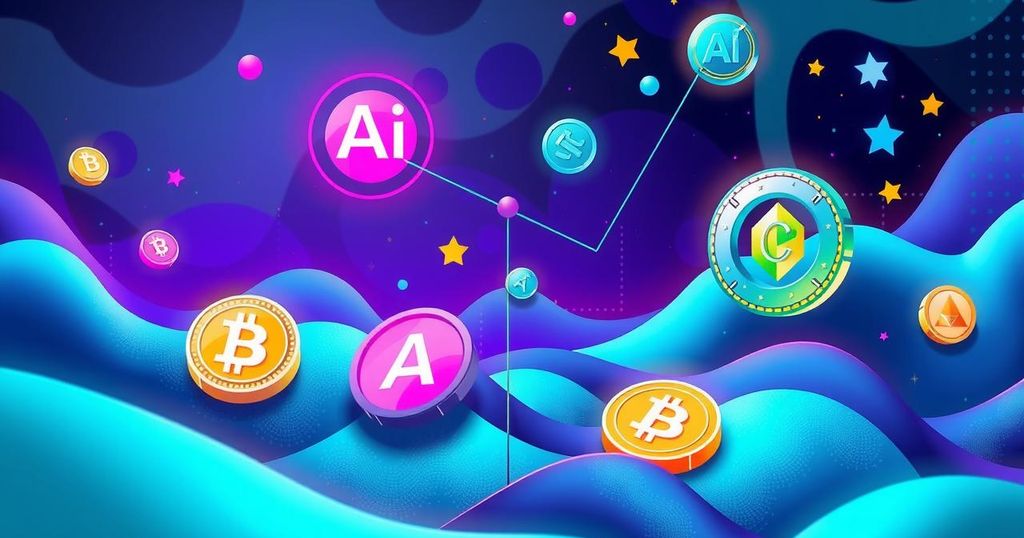Crypto Trends in 2025: AI Tokens and Memecoins Shape Investor Interests
In 2025, AI tokens and memecoins dominate the crypto market, with 62.8% of investor interest. AI tokens lead with 35.7% due to technological innovations, while memecoins, such as TRUMP and MELANIA, account for 27.1% driven by cultural narratives. The enduring popularity of these assets risks overshadowing essential utility projects, creating market stagnation despite apparent dynamism.
In the first quarter of 2025, market data from CoinGecko indicates that AI tokens and memecoins are capturing a significant 62.8% of investors’ interests despite anticipated changes in the crypto landscape. This scenario raises the question of whether the market is doomed to continue revisiting past successes or if this trend signals underlying shifts in investor sentiment.
AI tokens dominate with 35.7% of the global interest. They represent a blend of blockchain technology and innovation, with projects like Cortex and SingularityNET advancing smart contracts through predictive models. Furthermore, partnerships with tech companies enhance their decentralized data analysis capabilities. However, amidst genuine advancements, the speculative nature persists, as some tokens lacking utility leverage AI hype, complicating the differentiation between valuable assets and mere trends.
Memecoins constitute 27.1% of investor preferences, maintaining their cultural appeal. In January 2025, the release of TRUMP and MELANIA by Donald Trump’s team on Solana exemplified their impact on market sentiment. Though often ridiculed for their lack of substance, memecoins reveal that emotional narratives, whether political or humorous, often drive current market dynamics more than technical specifications.
The popularity of memecoins comes at a price, as seen with Solana (SOL), which has dropped 48% over three months. This decline highlights the unintended consequence of memecoins diverting funds from utility projects, thereby creating a tension between public virality and intrinsic value. Despite their contrasting natures, the coexistence of AI tokens and memecoins illustrates the dual identity of crypto – one eyeing future potential while the other remains fixed on the present. Bobby Ong from CoinGecko notes this market dichotomy: “We are tired of the same trends, but they reflect our conflicting expectations.”
The prevailing narratives hinder the development of innovative trends, as weary investors gravitate back to familiar assets, stalling the adoption of new protocols. This results in a crypto environment that appears active yet is intrinsically stagnant. Projects focusing on essential utilities, such as IoT and DeFi, struggle for funding, overshadowed by the media focus on memecoins.
The collapse of the Libra token, endorsed by the Argentine President Javier Milei, serves as a stark reminder. Within hours, $4 billion evaporated, eliciting widespread scepticism. Notably, deployments of memecoins on Pump.fun have plummeted by 56.3%, with the token success rate dropping to 0.7%. Despite this downturn, some traders remain willing to take risks, highlighted by a case where an investor turned $2,000 into $43 million with Pepe (PEPE). This fortunate instance, however, underscores the problematic “casino mentality” threatening the sector’s credibility. In contrast, AI tokens, although rife with speculation, maintain a long-term vision that could ultimately determine their success.




Post Comment